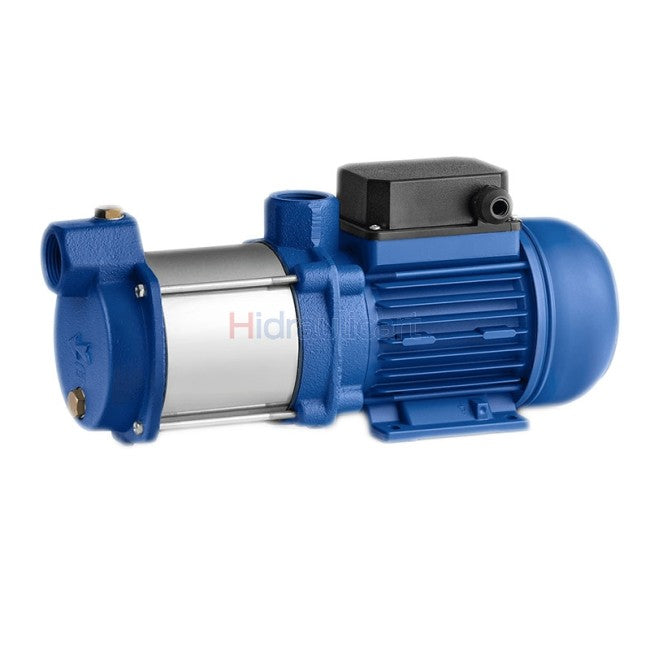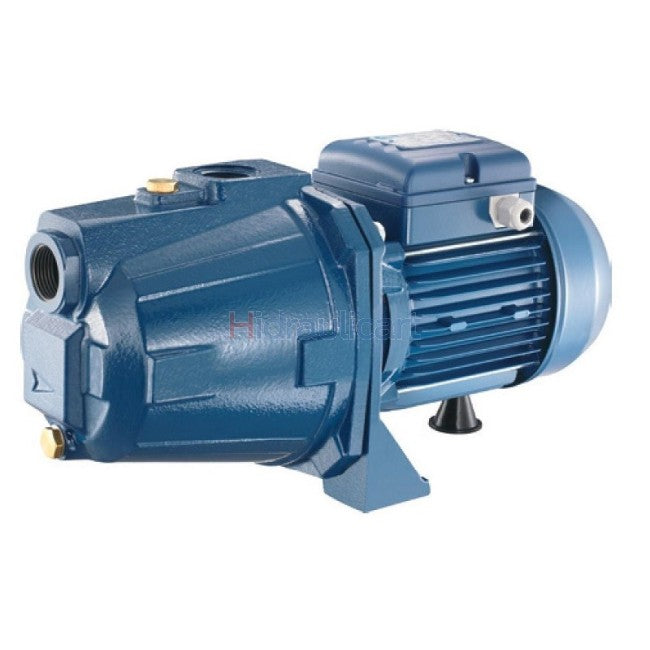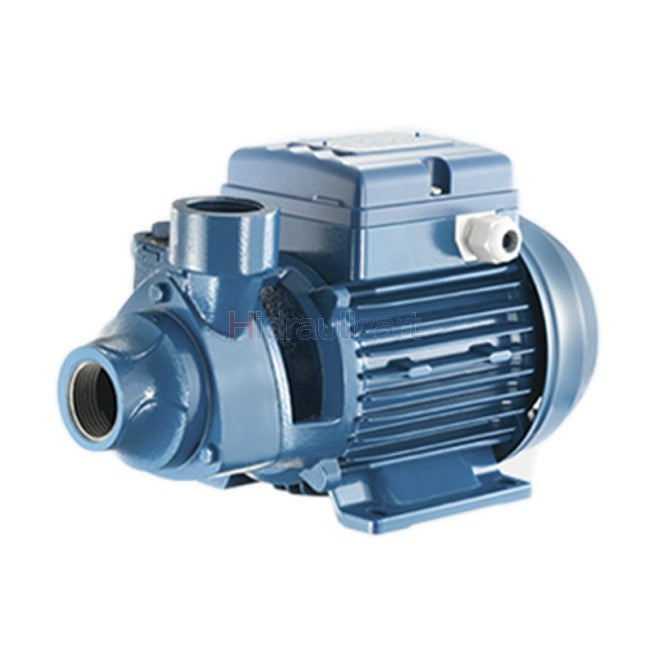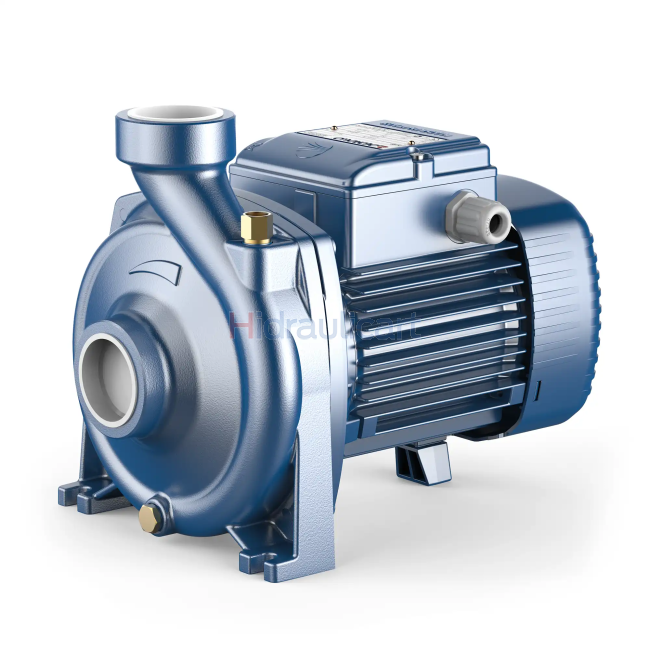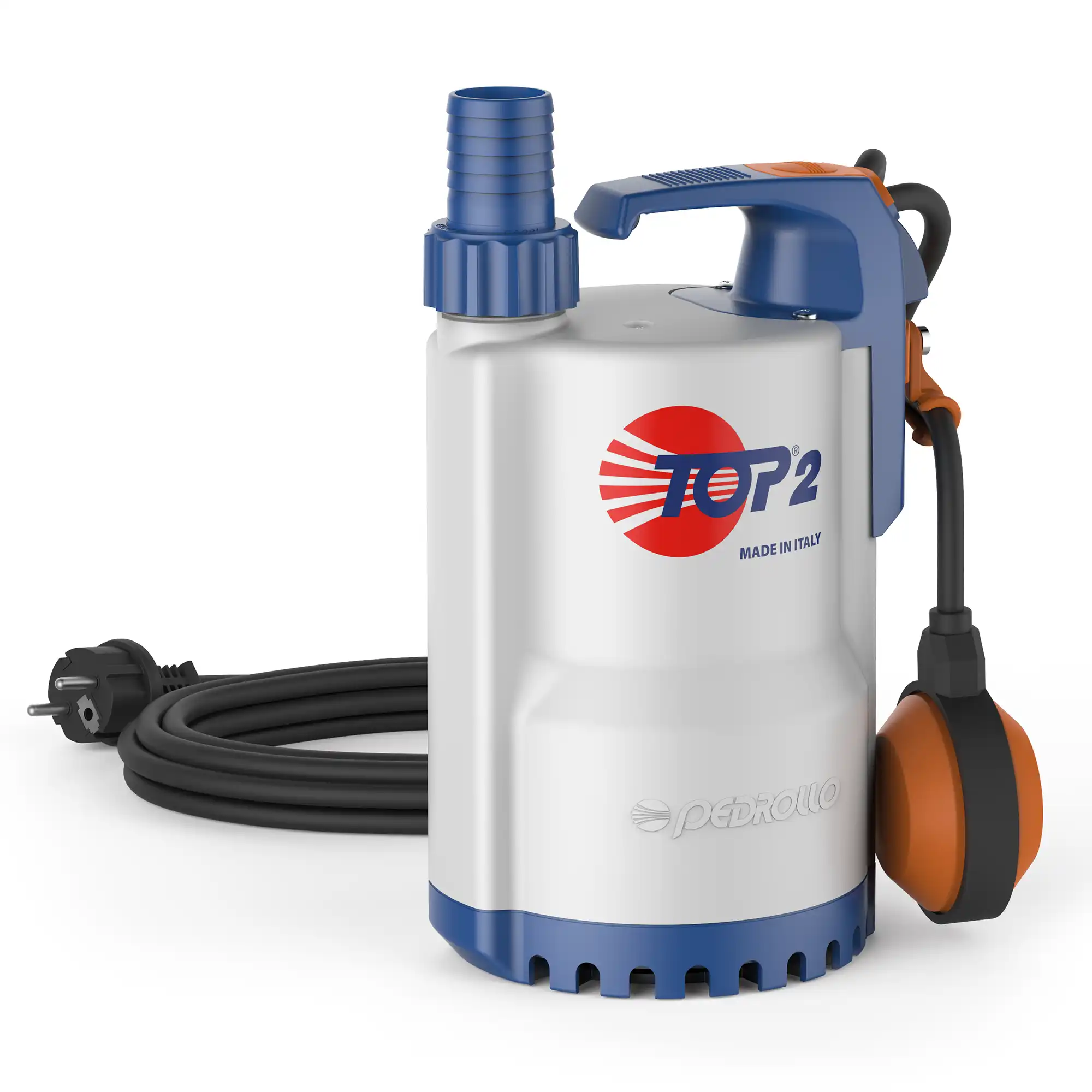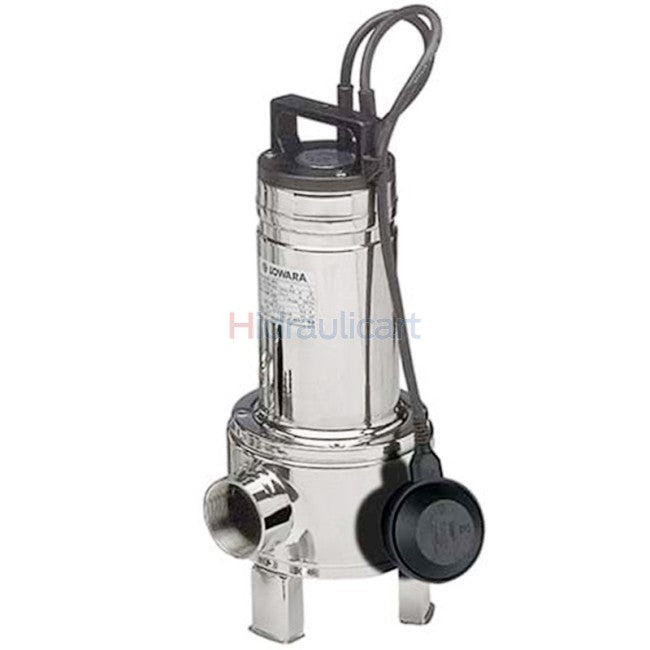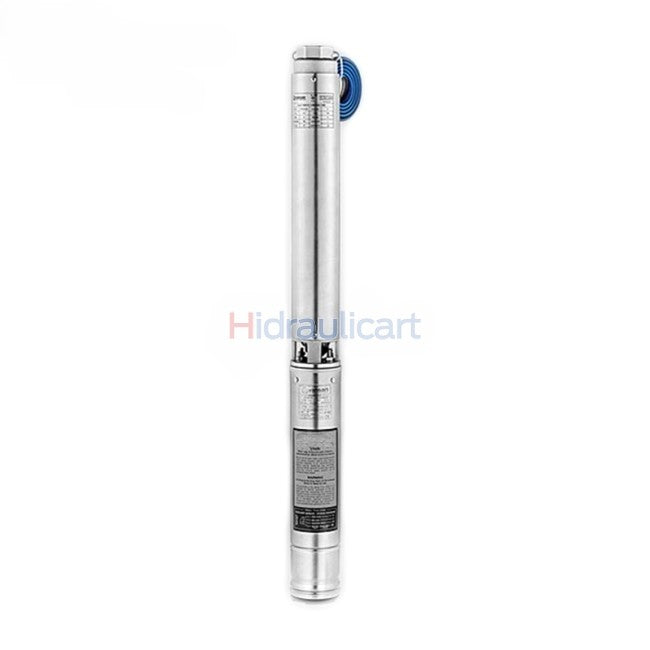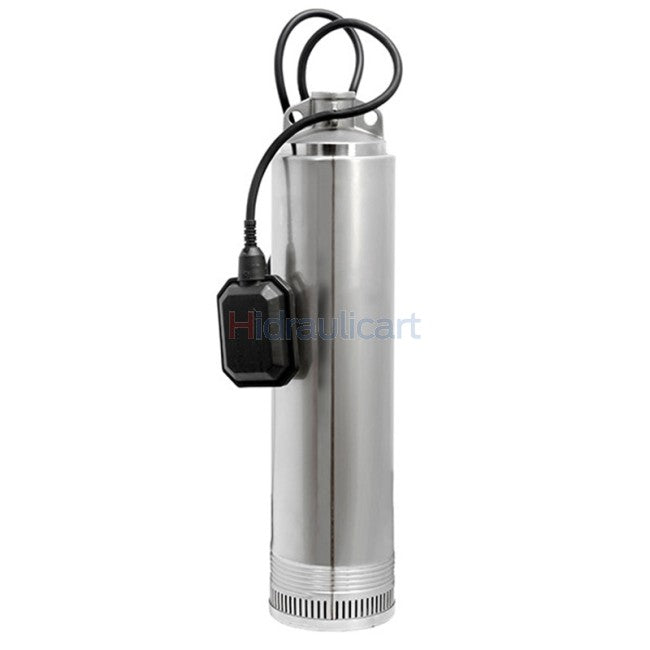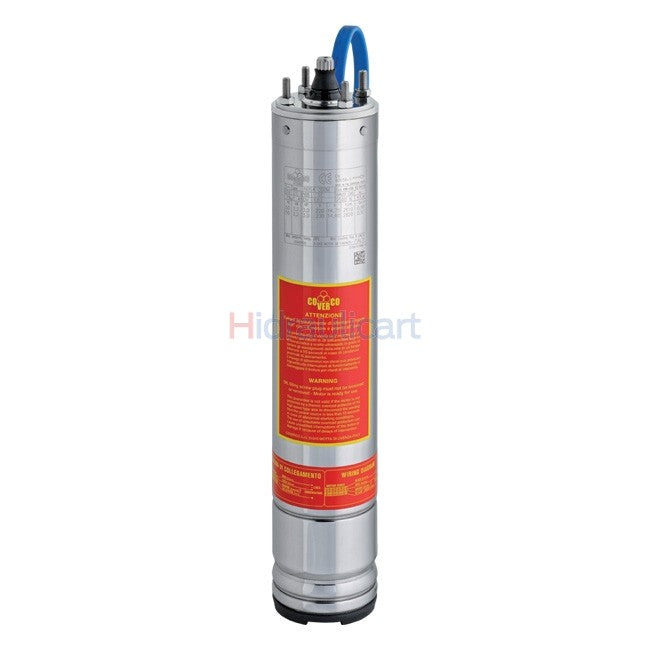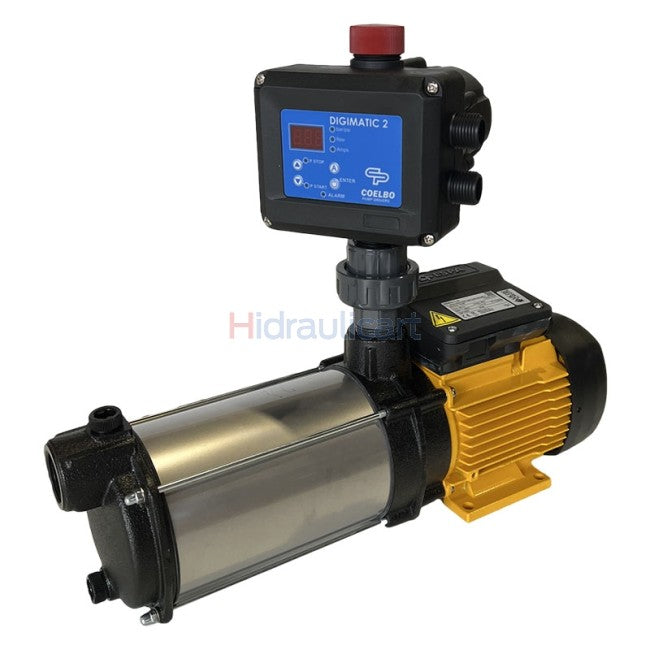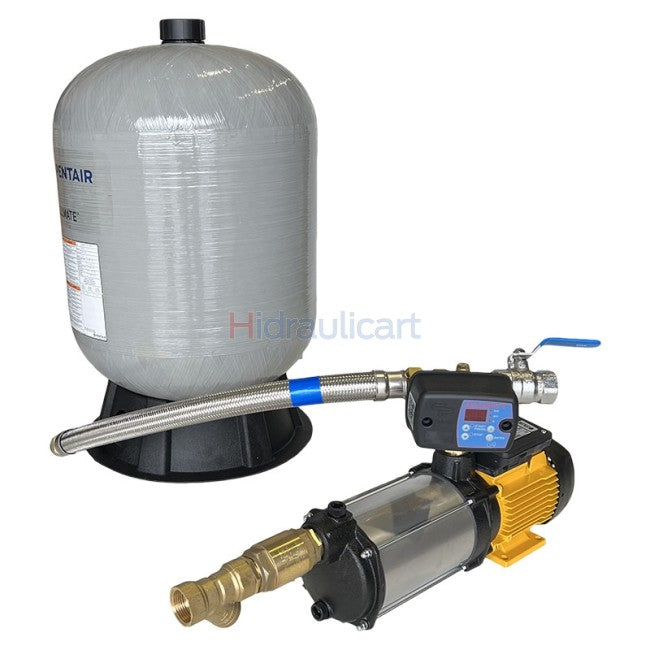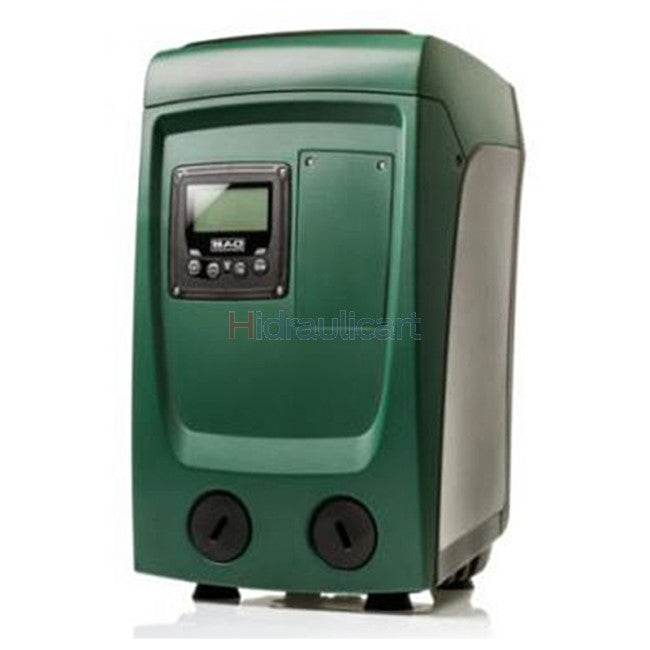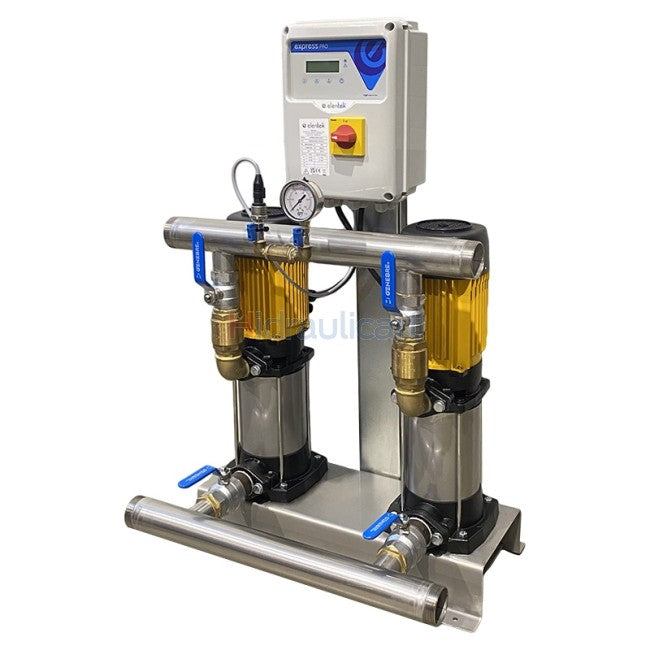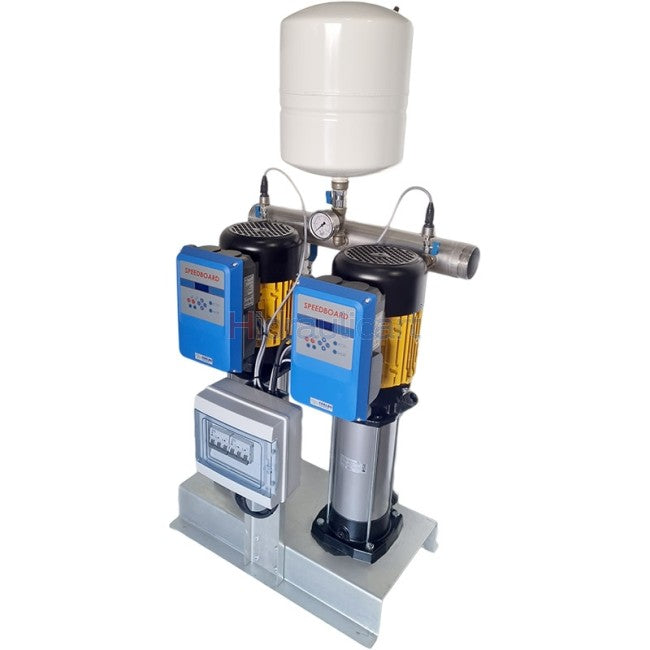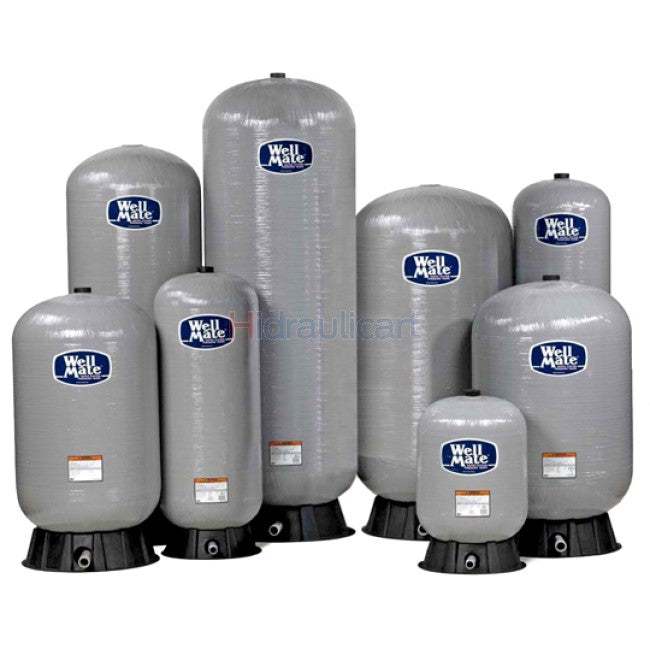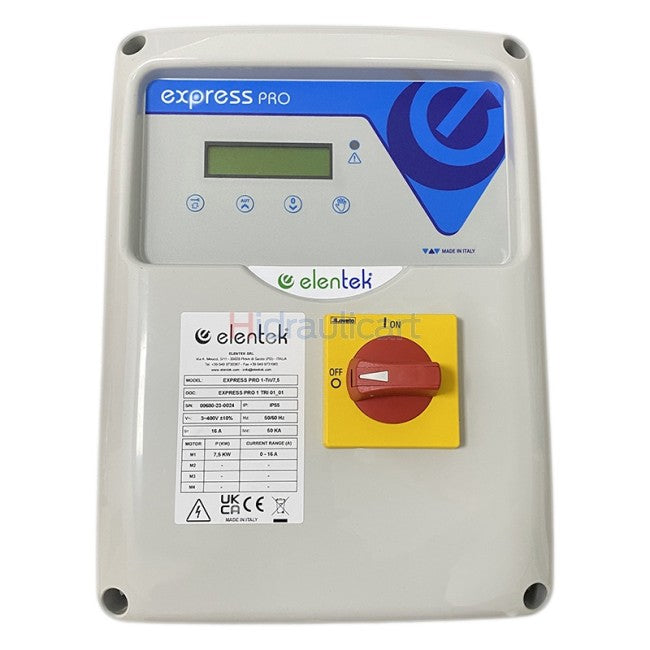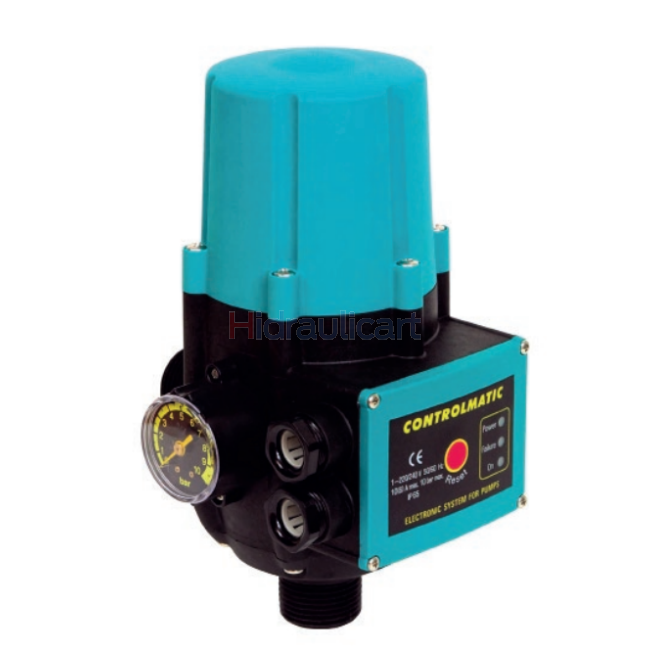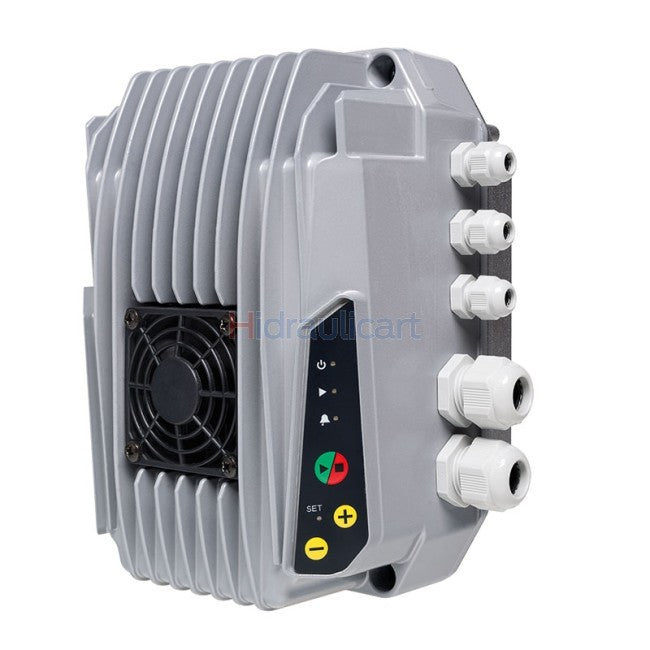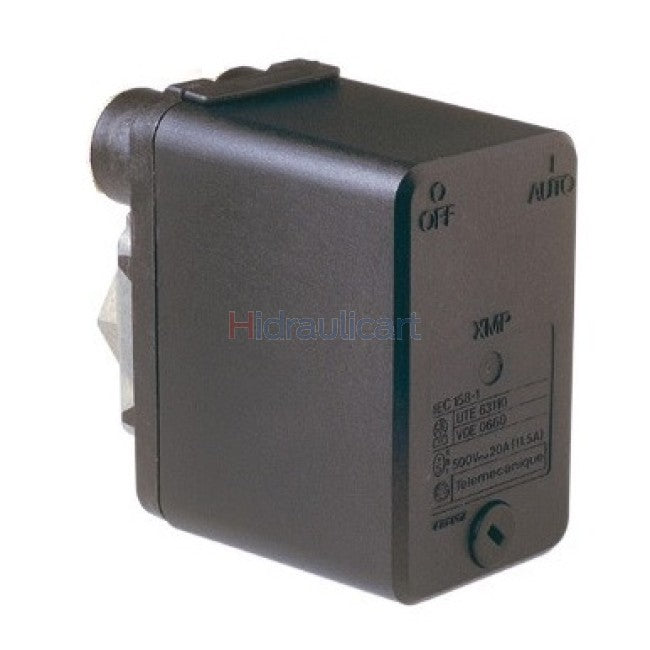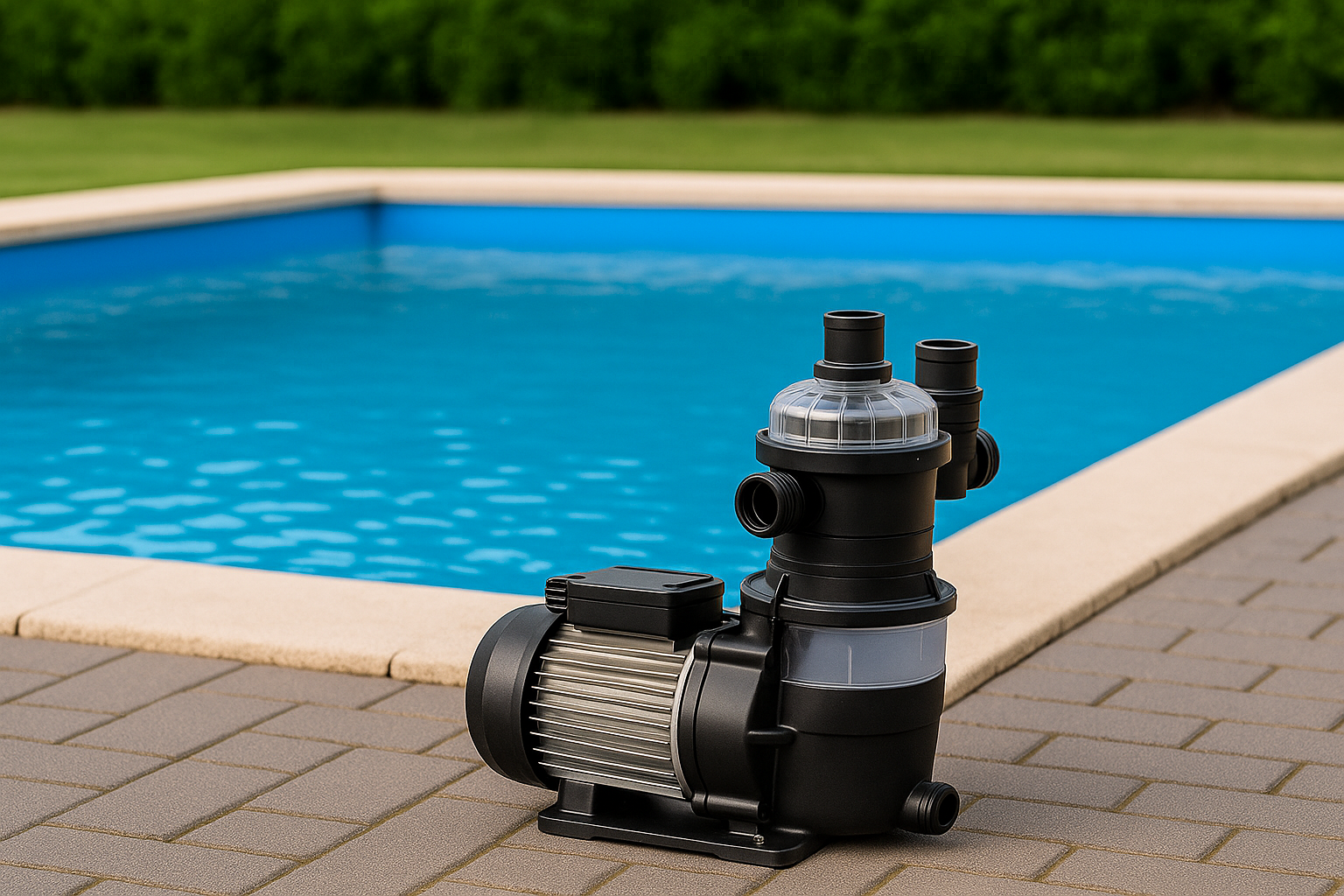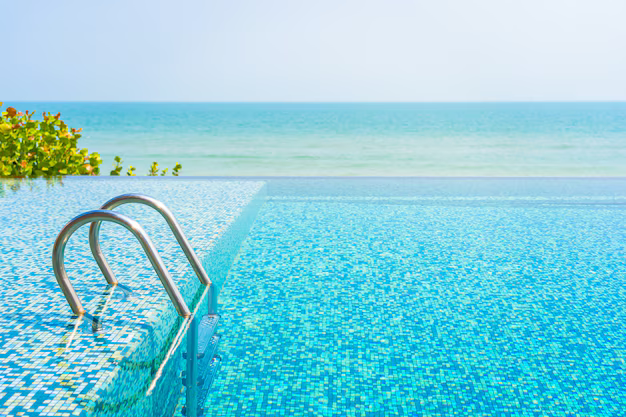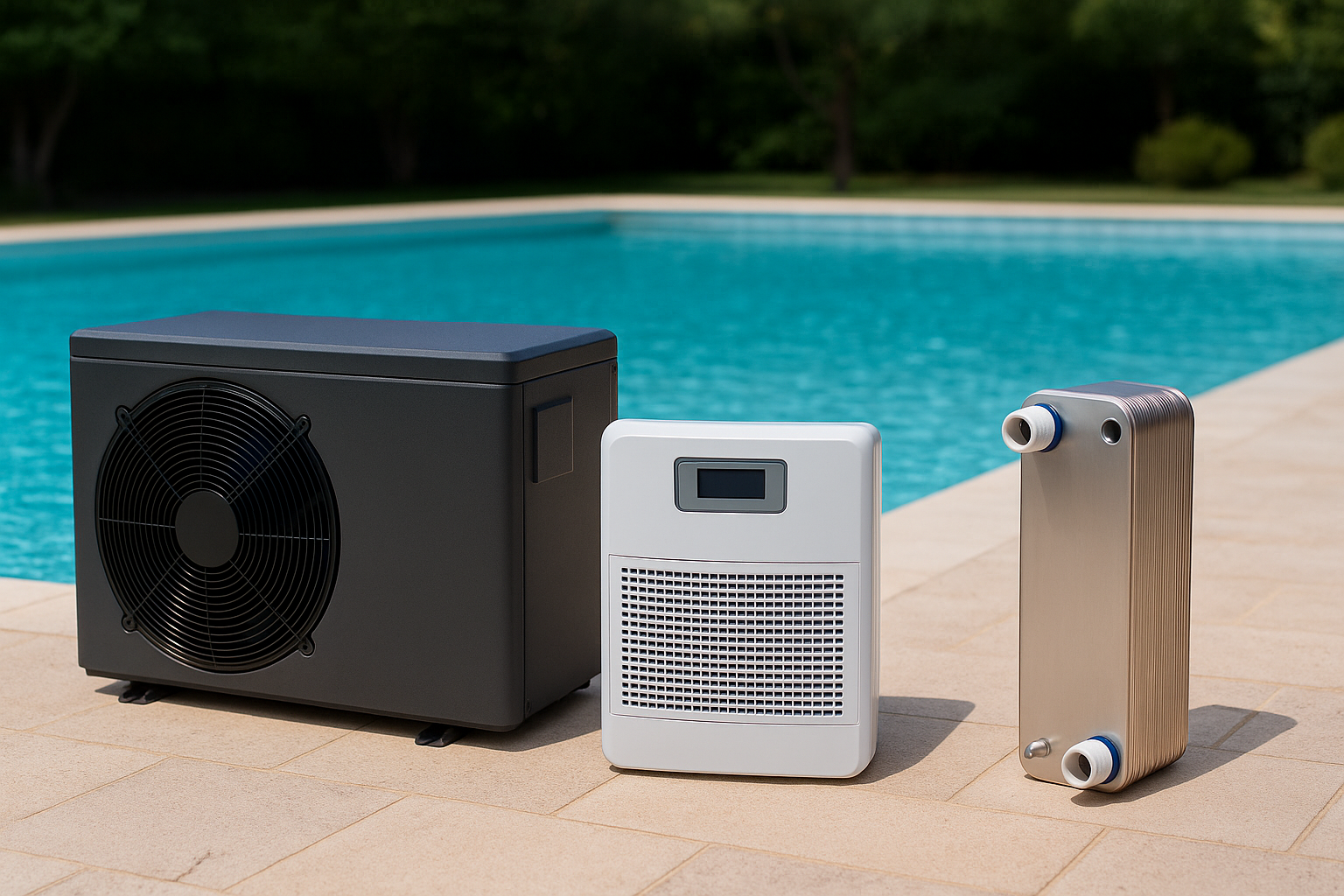What are they and what are they for?
The pool pump is the heart of the circulation system. It pulls water from the pool through the skimmers and main drains, forces this water through the filter, and then returns it clean to the pool. Without the pump, the water does not move, and therefore cannot be filtered, treated, or heated.
How does it work?
The pump operates based on an electric motor that drives a rotor (impeller). This rotor creates a negative pressure (vacuum) at the inlet, sucking water into the pump body. Then, through centrifugal force, the water is pushed out, gaining pressure and being pushed to the filter and other equipment (heaters, chlorinators, etc.).
|
Problems |
Likely Causes |
Practical Solutions |
|---|---|---|
| Does Not Start | No Power | Tripped Circuit Breaker | Check circuit breaker and power supply |
| Makes Strange Noise | Air in the line | Worn Bearings | Check seals, pre-filter, and water level |
| Loses Power | Low Flow | Dirty Rotor | Clogging in the Pre-Filter | Clean pre-filter and check rotor |
| Water Leak | Sealing | Damaged mechanical seal | Replace seal or gasket |
| Overheating | Dry Operation | Poor Ventilation | Install in a ventilated location | Check If It Is Running Dry |
|
Specific for Variable Speed Pumps |
||
| Error on panel or display off | Inverter or power supply failure | Check electrical current, fuses, and inverter panel |
| Does not start or stalls at certain speeds | Poorly configured parameters or outdated firmware | Reset settings or reprogram via manufacturer |
| Electrical noise or interference | Poorly grounded electrical installation or poorly insulated cables | Check pump grounding and insulation |
| Thermal overload error | Motor overheated due to excessive use at high speed |
Reduce time at high speeds or improve ventilation |
| Incompatibility with other equipment | Poorly integrated automated systems |
Confirm compatibility with the chlorinator, heater, etc. |
Maintenance and Usage Tip
Never run the pump without water in the system - This quickly damages the mechanical seal.
Clean the pre-filter basket weekly - especially in outdoor pools.
Protect the pump from direct sun and rain exposure - A ventilated and dry machine room is ideal.
Listen to the pump sound - Different noises may indicate air in the system or internal wear.
Check the monthly electrical consumption - Consumption peaks may indicate malfunction.
- Factors to consider when choosing a pump -
|
Factor |
What should be considered |
|---|---|
|
Power (HP) |
Compatible with pool volume and hydraulic resistance |
|
Flow rate (m3/h) |
The pump must be able to recirculate all the water in 6-8h |
|
Energy Efficiency |
Modern pumps save energy and reduce costs |
|
Noise Level |
For residential environments, silent pumps are preferable |
|
Compatibility with the filter |
It must be properly sized for the type and size of the filter |
